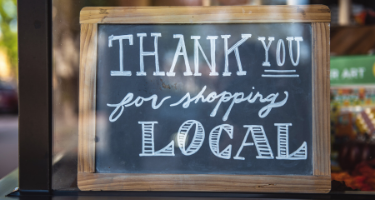On Monday, December 21, 2020, Congress released what is believed to be the final version of the Consolidated Appropriations Act, 2021 (“CAA”). Congress passed the bill late Monday evening nearly five days after signaling to Congress that the bill needed more direct aid to the American people, President Trump signed it into law on December 27, 2020.
This Act is extremely comprehensive, containing more than 5,500 pages, and includes government appropriations provisions and the long-awaited stimulus package. This article focuses solely on the Paycheck Protection Program (“PPP”), which the CAA affectionally calls the Economic Aid to Hard-Hit Small Businesses, Nonprofits and Venues Act (the “Act” – for simplicity).
While this discussion is based on the version of the CAA passed by Congress, certain aspects of the legislation will be implemented by the IRS and SBA, and their interpretations or guidance may differ slightly. This article will not discuss the aspects of the Act that allow for PPP expense deductibility because they were addressed in this article.
Note: To avoid confusion, the first PPP loan program created under the CARES Act will be referred to as “PPP1”, and the second PPP loan program created under the Economic Aid to Hard-Hit Small Businesses, Nonprofits and Venues Act will be referred to as “PPP2.”
Introduction of PPP2:
Undoubtedly one of the headline grabbers of the Act, Congress has appropriated more than $284 billion dollars to establish PPP2, which will offer loans through March 31, 2021 (or until funds are exhausted). The terms are as follows:
- Eligibleentities are defined to include companies that meet the following:
- Any business concern, housing cooperative, veterans’ organization, tribal business, self-employed individual, sole proprietor, independent contractor, agricultural cooperative, or certain nonprofit organizations (501(c)(6) and the now included 501(c)(6) – subject to certain limitations)that:
- Employs not more than 300 employees; and
- Suffered a reduction in gross receiptsof not less than 25% in the first, second, or third quarter of 2020, as compared to the same quarter in 2019
- Borrowers who submit an application after January 1, 2021 can also include the fourth quarter 2020 compared to Q4 2019.
- There are additional ways to qualify for borrowers that were not in business for the respective quarters of 2019.
- Gross receipts for nonprofit entities is defined to have the same meaning as section 6033 of the Internal Revenue Code, but no definition was provided for for-profit entities.
- Entities not eligible include:
- Any entity that is a type of business concern described in section 120.110, other than a business concern described in subsection (a) or (k) of such section;
- Any business concern primarily engaged in political/lobbying activity; or
- Any business concern with specifically-defined ties to either China or Hong Kong.
- Maximum loan amount is calculated as follows:
- The lesser of:
- 2.5 times the average total monthly payroll costs incurred or paid by the entity during either:
- The 1-year period before the date of the loan; or
- Calendar year 2019
- $2,000,000
- 2.5 times the average total monthly payroll costs incurred or paid by the entity during either:
- Entities with NAICS codes starting with 72 hit especially hard by the pandemic (generally restaurants, hospitality/accommodation) are eligible to utilize 3.5 as the multiplier, subject to the $2,000,000 maximum. These entities are also afforded a continued waiver of the affiliation rules (as are franchises and businesses receiving assistance from an SBIC)
- Seasonal employers, similar to the prior program, are provided an alternative calculation period that includes the average payroll for any 12-week period within defined ranges.
- The lesser of:
As would be expected, there are crucial questions that remain, namely the definition of gross receipts and the maximum loan amount offered to affiliated groups. The SBA is required to provide guidance within ten days, so we should expect to see some clarifications shortly after the Act is signed into law.
Reopening of PPP1:
The Act also reopens PPP1 by earmarking $35 billion of the aforementioned $284 billion for eligible recipients who have not previously received a loan under PPP1. It appears would-be borrowers who fall into this category would be subject to the eligibility rules of PPP1, while receiving the benefit of the expanded list of expenses eligible for forgiveness and loan forgiveness procedures that are described in the following sections. PPP1 loan applications for borrowers who have not previously taken advantage of these funds will be accepted until March 31, 2021.
Other provisions relative to PPP1 include:
- In the event that an eligible borrower under PPP1 returned all or part of their loan, they would be eligible to reapply for a loan in the amount equal to the difference between the amount retained and the maximum applicable loan amount.
- In the event that a borrower did not accept the full amount of the loan they were eligible for under PPP1, the borrower may request a modification to increase the amount of the loan.
- In the event that an interim final rule issued by the SBA caused a borrower to become eligible for an amount greater than that offered by the lender under PPP1, the borrower is eligible for an increase in the loan amount.
The Act requires the SBA to provide procedural guidance covering this section of the legislation within 17 days of enactment.
Simplified Forgiveness Process for Loans $150,000 or Less:
A simplified forgiveness process, especially for the smallest PPP borrowers, was publicly identified as a priority by Congressional leaders on both sides of the aisle. Borrowers of loans $150,000 or less stand to benefit from the following provisions of the Act:
- Simplified forgiveness application containing certifications rather than numerical calculations that demonstrate the borrower would achieve full forgiveness and materially complied with the requirements of the PPP
- The borrower will not be required to submit any documentation proving compliance with the requirements, but must retain employment records for a 4-year period and other records for a 3-year period following the submission.
- The SBA is required to issue the updated application form within 24 days of the effective date of the Act and it must be no longer than one page in length.
In practice, we expect the SBA to modify the current Form 3508-S form available on their website, which would substantially meet the requirements identified in the Act.
Expansion of Allowable/Forgivable Expenses:
Congress expanded both the allowable and forgivable uses of PPP loans to include the following defined non-payroll costs – importantly, these changes apply to PPP1 and to PPP2 (subject to one caveat discussed below).
- Covered operations expenditures – includes payment for any business software or cloud computing service that facilitates business operations, product service/delivery, processing, payment or tracking of payroll expenses, human resources, sales and billing functions, or accounting and tracking of supplies, inventory, records and expenses.
- Covered property damage cost – includes costs related to property damage and vandalism or looting due to public disturbances that occurred during 2020 that were not covered by insurance or other compensation.
- Covered supplier costs – expenditures made by an entity to a supplier of goods which are:
- Essential to the operations of the entity at the time at which the expenditure is made; or
- Made pursuant to a contract order/purchase order (i) in effect at any time before the covered period or (ii) with respect to perishable goods, in effect before or at any time during the covered period.
- Covered worker protection expenditures – includes an operating or capital expenditure to facilitate the adaptation of the business activities of an entity to comply with requirements established or guidance issued by HHS, the CDC, or OSHA or guidance issued by a state or local government starting on March 1, 2020, relating to the maintenance of standards for sanitation, social distancing or other worker/safety requirement relating to COVID-19. The Act details which costs would fall under this category, however, it does specifically exclude residential real property or intangible property.
In addition, the definition of payroll costs was expanded to include employer payments for group life, disability, vision and dental insurance.
As mentioned, these provisions apply to PPP1 and to PPP2, except as to loans for which the borrower received forgiveness before the date of the Act.
Changes to EIDL Advance Treatment:
The Act also eliminates the previous requirement that the loan forgiveness amount would be reduced by the amount of any EIDL advance, and designates that EIDL advances are treated as not taxable. It is not clear how this will be administered for borrowers who have already received forgiveness on their PPP1 loan. For a detailed discussion on how a company may have a second chance at an EIDL advance, see this article.
Changes to Covered Period Determination:
The Act re-defines ”covered period” to mean the period that begins on the date of the origination of a covered loan and ending on a date selected by the recipient between 8 weeks after the date of origination and 24 weeks after the date of origination. This does away with the rigidity of the 8-week and 24-week covered periods, and eliminates the uncertainty borrowers faced if they applied early. Further, the $100,000 wage cap continues to apply for the chosen covered period. For example, if a borrower uses a 10-week covered period, then the wage limitation is $100,000 x 10/52, or $19,231.
In toto, this change is welcome news to PPP borrowers and should speed-up the loan forgiveness process. It is also helpful to PPP1 borrowers that have not yet applied for forgiveness.
Coronavirus Resource Center.




